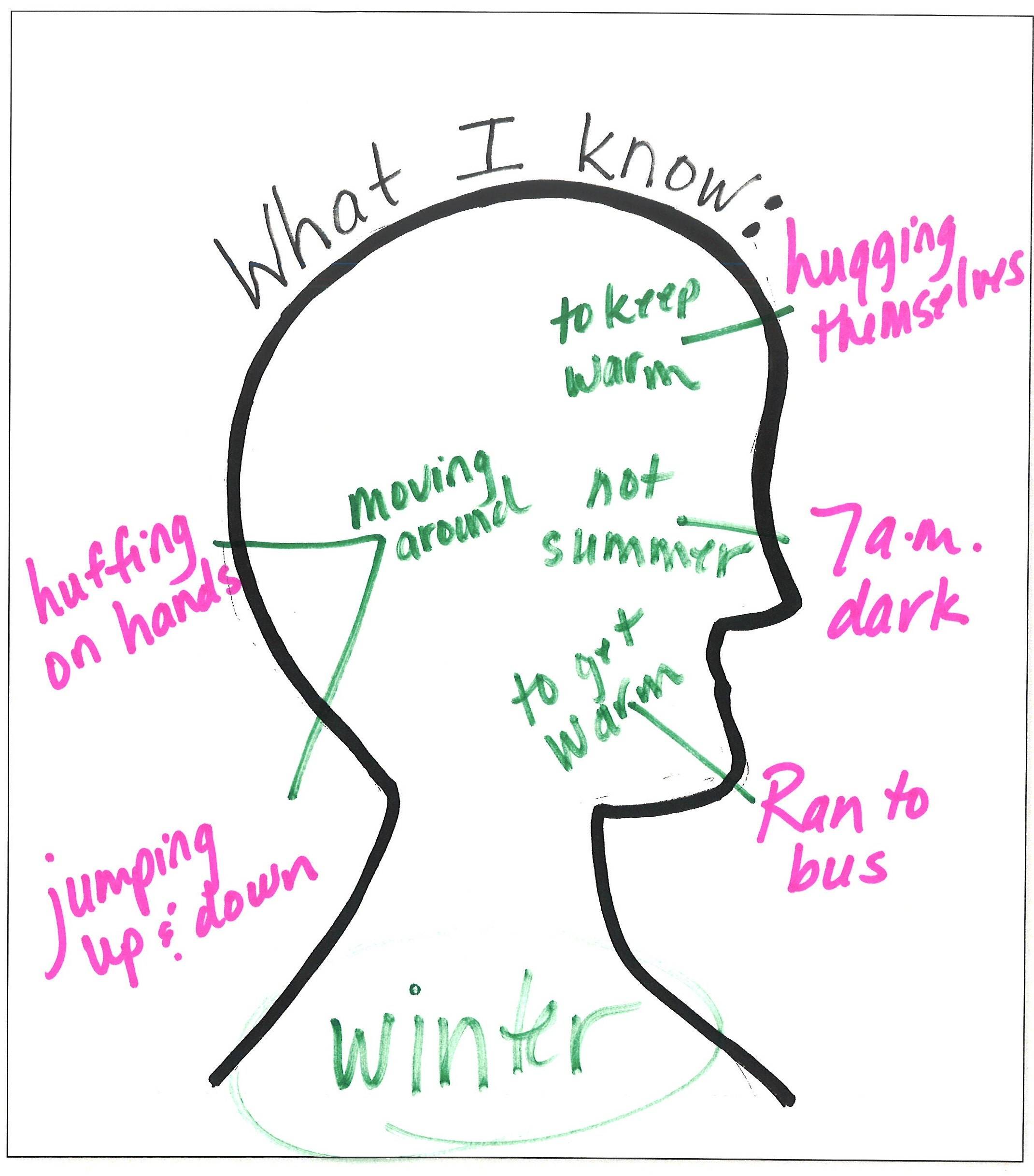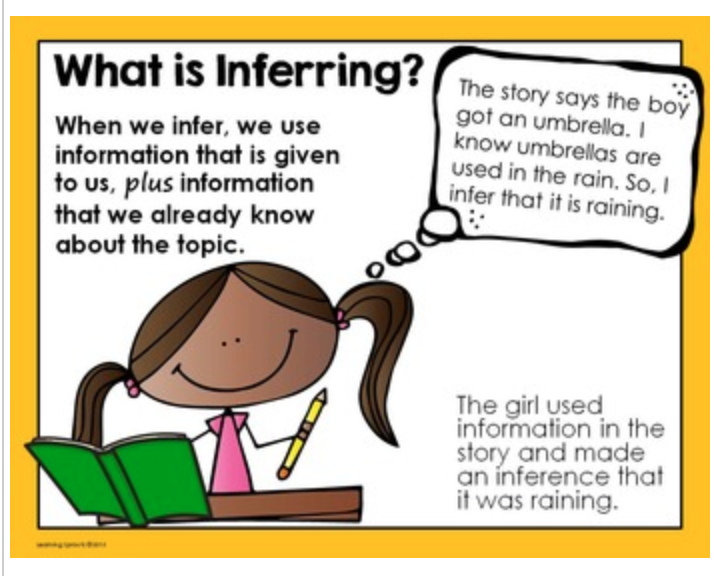Drawing Of Inferences, Web inference is drawing conclusions based on information that has been implied rather than directly stated and is an essential skill in reading comprehension.
Drawing Of Inferences - Web learning to make inferences is a key literacy skill. Only in reading, the evidence for inference consists solely on words rather than actual events, expressions, or gestures. Web inference is drawing conclusions based on information that has been implied rather than directly stated and is an essential skill in reading comprehension. Web current concerns about deep fakes may reduce trust in all images, potentially limiting their power to mislead as well as inform. She said she was tired, so she must have gone home to bed.” Many of us refer to inference as ‘reading between the lines’, but that does not help a child in school who is struggling to read. Web an inference is when you draw evidence from a text or have an certain experience that can lead to a sort of conclusion that is not absolutely just out there, because you have text or evidence that help you draw the conclusion. It’s when you go beyond the evidence and reach some further conclusion. In contrast, when we make inferences, we reach conclusions based on evidence and reasoning. There are several ways to help you draw conclusions from what an author may be implying. By connecting clues and using your background knowledge, you'll make better inferences and improve your communication, reading. Web download citation | on aug 1, 2024, jie feng and others published mediation research: We figure things out by applying our own knowledge and experience to the situation at hand. The following are descriptions of the various ways to aid you in. Web case studies, including the genesis of the mini by alec issigonis, samples of work by alvar aalto, and a reinterpretation of student sketches from a classical design study by gabriela goldschmidt, serve to illustrate how drawing inferences with pencil and. Only in reading, the evidence for inference consists solely on words rather than actual events, expressions, or gestures. Web. Web learning to draw conclusions and inferences is a skill that develops over time. Web case studies, including the genesis of the mini by alec issigonis, samples of work by alvar aalto, and a reinterpretation of student sketches from a classical design study by gabriela goldschmidt, serve to illustrate how drawing inferences with pencil and. Web inference is drawing conclusions. Web case studies, including the genesis of the mini by alec issigonis, samples of work by alvar aalto, and a reinterpretation of student sketches from a classical design study by gabriela goldschmidt, serve to illustrate how drawing inferences with pencil and. You already make inferences all of the time. We draw inferences all the time when we say things like:. Web an inference is when you draw evidence from a text or have an certain experience that can lead to a sort of conclusion that is not absolutely just out there, because you have text or evidence that help you draw the conclusion. Students will identify key elements and strategies for making inferences in texts. Web drawing inferences while you. Web drawing inferences while reading requires willingness to look at the evidence and come to a conclusion that has not been expressed in words. Drawing inferences in everyday life requires the same skills. We figure things out by applying our own knowledge and experience to the situation at hand. Web when readers make inferences, they can often pull more information. It can be used to help you analyze hard data, such as a set of sales figures, or to test assertions, such as the project will go live in april. Web making accurate inferences is an essential skill for understanding texts, movies, and other people. To explain what part of a text means while drawing inferences about that text. We. (nasdaq:tsla) cars, and optimus robots. There are several ways to help you draw conclusions from what an author may be implying. Students must look past what the text says and draw deeper conclusions as they read. We draw inferences all the time when we say things like: Web an inference is when you draw evidence from a text or have. There are several ways to help you draw conclusions from what an author may be implying. Web inference is the process of drawing conclusions based on available information. Only in reading, the evidence for inference consists solely on words rather than actual events, expressions, or gestures. Web making inferences is a comprehension strategy used by proficient readers to “read between. Inferences are more than just guesses—they are what we figure out by combining clues from the text with our own knowledge. Web an inference is the process of drawing a conclusion from supporting evidence. Web drawing inferences is about figuring out what is not said and is not on the page. It also includes a funny photo with the chance. Web when readers make inferences, they can often pull more information out from the story, making it more meaningful to them. Students will practice making inferences based on evidence and logical reasoning. The skill requires children to put together various pieces of information, and relies on good word knowledge. Web inference is the process of drawing conclusions based on available information. People make inferences every day, both in oral and written communication. Students must look past what the text says and draw deeper conclusions as they read. By connecting clues and using your background knowledge, you'll make better inferences and improve your communication, reading. Web current concerns about deep fakes may reduce trust in all images, potentially limiting their power to mislead as well as inform. It’s when you go beyond the evidence and reach some further conclusion. Web drawing inferences is about figuring out what is not said and is not on the page. Only in reading, the evidence for inference consists solely on words rather than actual events, expressions, or gestures. We draw inferences all the time when we say things like: Inside the no prep, gradual release lesson, you'll find: Help your child develop skill by providing experience with inferential information, making implied information more clear, and helping your child draw. We figure things out by applying our own knowledge and experience to the situation at hand. These inferences anchor charts will help your students get more from their reading.
Inferring (Making Inferences) Reading Posters Classroom Decor in 2021

Making Inferences Inference anchor chart, Kindergarten anchor charts

How To Draw Inferences Theatrecouple Cafezog

Inference How To Anchor Chart Rockin Resources

1202BK_1.JPG Inference, Comprehension strategies, Teaching reading

Drawing Inferences Mrs. Caporale’s 4th Grade Class

Drawing Inferences Worksheet by Teach Simple

PPT Drawing Inferences PowerPoint Presentation, free download ID

How to Draw Inferences YouTube

Making inferences anchor chart for reading/ELA. Inference anchor
In This Lesson, We Will Explore The Concept Of Drawing Inferences In Fiction, Examining How Language Usage, Grammatical Structures, And Literary Devices Help Us.
Web Download Citation | On Aug 1, 2024, Jie Feng And Others Published Mediation Research:
Students Are Required To Make An Educated Guess, As The Answer Will Not Be Stated Explicitly.
Inferences Are More Than Just Guesses—They Are What We Figure Out By Combining Clues From The Text With Our Own Knowledge.
Related Post: